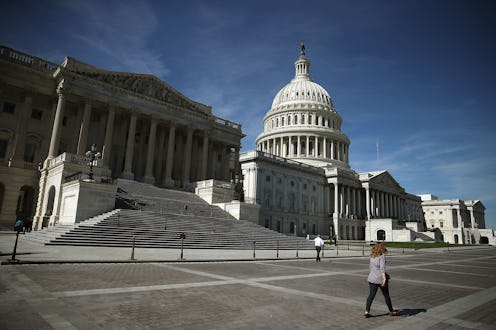News
Republicans Have The Edge In Keeping House Control
Tuesday has the potential to be a disaster for Republicans: with Hillary Clinton leading steadily in the polls and the Senate looking more and more likely to flip back to Democratic control, the GOP could have a bad night on Election Day. But, fortunately for the party, of the 49 contested races in the House of Representative, Republicans only need to win 14 to maintain control of the chamber, according to political science expert Larry Sabato, and if the polls are any indication, the Republicans are already well on their way.
The House of Representatives was designed to be the more representative of the two chambers of Congress. Its members serve short, two-year terms, and there are four times as many of them as there are senators. But the House has become reliably Republican in recent election— and, arguably, a starkly un-representative institution.
This was most notable in the 2012 election, where, according to the Cook Political Report (a nonpartisan group), 50.59 percent of Americans voted for a Democratic House member, but the Democrats only ended up with 46.21 percent of seats. A similar pattern followed in 2014, when House Republicans won 57 percent of the seats in the chamber with only 52 percent of the vote, meaning the popular vote to actual seats ratio increased.
By some estimates, Democrats will need an extra 10 million votes to reclaim the House. This is due in part to the way in which Congressional districts are gerrymandered — the process of creating bizarrely shaped districts to favor one party over another. And there are some some pretty bizarrely shaped districts out there.
But that only explains part of the problem, and moreover, both Republicans and Democrats are guilty of it to some extent (though there are those that argue that the GOP is way guiltier).
The larger looming problem is what observers call “The Big Sort,” that is the tendency of Democrats to want to live in clustered urban areas. Because the House still apportions its representatives by geographic districts and not by popular vote, Democrats who tend to gravitate towards densely populated areas end up making their votes superfluous.
To put it into more practical terms: take a hypothetical Ohioan who grows up in the Buckeye State, maybe even goes to university there, but decides that she wants to move somewhere else. She’s much more likely to move to Chicago, New York, or Los Angeles, where, more likely than not, she’ll end up registering in an already deep-blue Congressional district. Plus, she’s just removed a liberal vote from her Ohio Congressional district. Multiply by a few thousand or million voters, and, well, you end up with a pretty Red House.
During Donald Trump’s worse moments this campaign, there was chatter about the Democrats recapturing the House. But to do that, of the 49 contested seats, they’d need to win the 12 that are leaning their way already, all 16 toss-up races, and then eight of the races that are currently leaning Republican. While it’s not impossible, it’s a moon shot, though that’s not stopping the Dems from trying.
